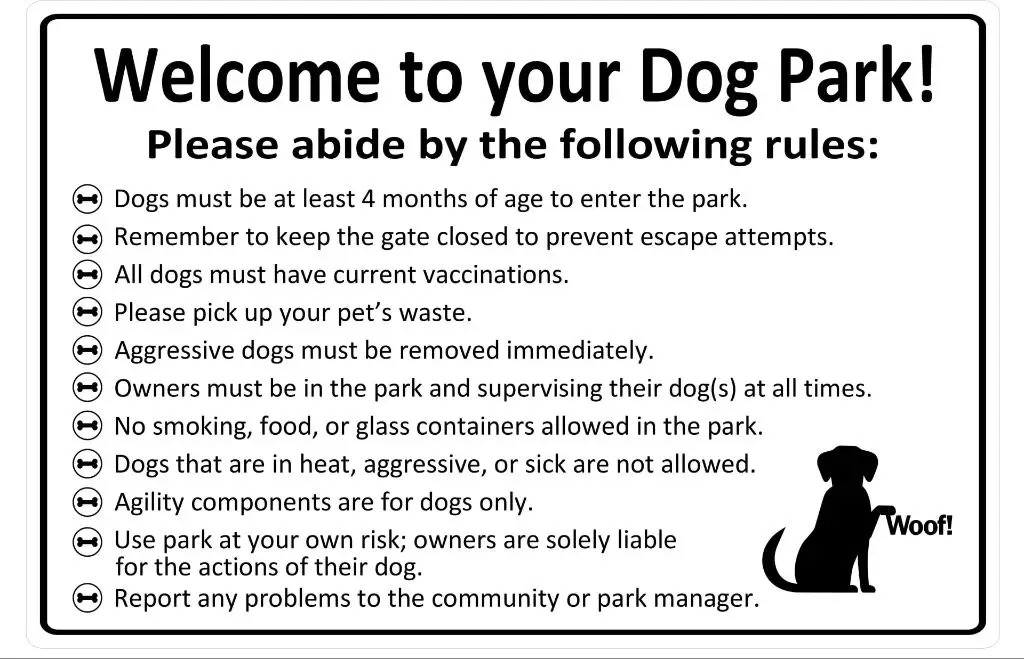Can You Bring Your Small Dog Everywhere?
For many pet owners, small dogs are more than just pets – they’re beloved family members. And naturally, we want to bring our furry friends with us wherever we go. But can small dogs truly go everywhere we do? As a dog owner, it’s important to know the rules and regulations regarding bringing your pup to public places. While small dogs do have some advantages over larger breeds when it comes to mobility and transport, there are still limitations on where they are allowed.
In this article, we’ll explore the ins and outs of bringing your small dog to restaurants, stores, public transportation, hotels, parks, beaches, and more. We’ll outline the specific policies that dictate where your dog can and cannot accompany you. With the right information, you can avoid unpleasant surprises and enjoy bringing your tiny companion along on your adventures.
Rules and Regulations
There are some laws and regulations regarding bringing dogs into public places that pet owners should be aware of. Though rules can vary by city and state, there are some general guidelines:

– The Americans with Disabilities Act allows people with disabilities to bring their service dogs into most public places. These working dogs must be harnessed, leashed, or tethered.
– Federal law allows passengers with disabilities to travel with their service dogs in the cabin on airplanes without extra fees. The dog must be trained to perform tasks directly related to the owner’s disability.
– The Air Carrier Access Act prohibits discrimination by all U.S. and foreign air carriers against qualified individuals with a disability who travel with service animals.
– Though there are no federal laws requiring most public places to allow dogs, many states have laws against banning dogs from establishments like grocery stores, restaurants, hotels, and taxis. However, business owners can set rules for where dogs are allowed on their premises.
– Some public places like food prep areas in restaurants, sterile hospital rooms, and dressing rooms typically prohibit dogs for health and safety reasons. But service dogs may be granted access if the owner needs their assistance.
– Most national and state parks allow pets in designated outdoor areas if they are leashed. But some beaches and parks prohibit dogs during busy seasons.
– Always check your local laws to find out where dogs are permitted, as regulations can vary even within the same state or city.
Restaurants
Policies for allowing dogs in restaurants vary widely and there are no federal laws in the US that uniformly regulate this. In general, restaurants have the right to determine their own pet policies. Many restaurants prohibit pets for health code and sanitation reasons, though some do accommodate dogs in outdoor dining areas. It’s a good idea to call ahead to check on a restaurant’s specific pet rules before arriving with your dog. While most restaurants don’t allow dogs inside, some restaurants are more pet-friendly than others. For example, there are some restaurants with “doggie menus”, dog-friendly patios, or special events like “Yappy Hour” where dogs are welcome. However, keep in mind that other patrons may have allergies or fears around dogs, so be mindful of keeping your dog well-behaved and non-disruptive if you do bring them into a restaurant.
Retail Stores
Most retail stores do not allow dogs inside, with the exception of pet stores. This is due to health regulations as well as potential dangers and disruptions dogs may cause. Retail stores want to provide a safe and clean environment for all shoppers. However, some retail stores may allow small dogs if they are carried in a bag or purse. The policies vary by individual store and location. Some questions to ask are:
- Is there a sign on the door noting if dogs are allowed?
- What have you seen other shoppers do – do they commonly bring small dogs in purses?
- Is it a grocery store or restaurant where health codes apply? These typically prohibit dogs.
- Does the store sell food that could be contaminated by dogs?
- Is it a small boutique that may be more flexible than a large chain store?
When in doubt, call the store first and ask what their policy is. Be prepared that you may need to leave your dog outside or with someone while you shop. Consider the weather and safety conditions before tying your dog up or leaving them unattended.
Public Transportation
When it comes to bringing your small dog on public transportation like buses, trains, and subways, the rules can vary depending on where you live. Many public transit systems do allow small dogs, but they often have restrictions on size, require the dog to be in a carrier, and may charge an extra fee.

For example, in New York City, small dogs are allowed on the subway, buses, and trains if they can fit in a bag or carrier. Dogs that don’t fit must be leashed. In cities like Boston, small dogs in carriers are allowed on transit at no extra charge, but larger dogs may require a muzzle and will cost extra.
Some public transit systems only allow service animals, not pets. It’s a good idea to check your local transit website for the specific rules before brining your small dog on board. Having them properly contained in a carrier is the best way to avoid issues. Keep in mind that even if allowed, bringing a small dog on crowded public transit can be challenging and stressful for the dog.
Airplanes
When it comes to bringing your small dog on an airplane, there are specific regulations you need to follow. The rules can vary depending on the airline, but there are some general guidelines:
Most airlines require small dogs under a certain weight (usually 8-10 lbs) to travel in an approved pet carrier that fits under the seat in front of you. The carrier must be leak-proof and ventilated, and allow the dog to stand up and turn around comfortably. You’ll need to stow the carrier under the seat in front of you for takeoff and landing.
Make sure to check with the specific airline for their size and weight restrictions. Some may allow slightly larger dogs to travel in a carrier under the seat. Others may require dogs above a certain weight to travel as cargo or with a pet shipping service.
There are usually fees charged each way for bringing a pet on board, so factor this cost into your travel budget. Fees are generally $100-200 roundtrip.
It’s important to properly document your dog for travel. They’ll need an up-to-date health certificate from your vet and may require a Canine Good Citizen certificate as well.
When traveling with your small dog on a plane, be sure to arrive at the airport early, potty and feed your dog before the flight, bring ample food/water and puppy pads, and follow all airline pet policies to ensure a smooth trip for both you and your pooch!
Hotels

When traveling with a small dog, it’s important to find pet-friendly hotel accommodations. Many hotels now cater to guests with pets by offering special pet packages and amenities. However, policies can vary greatly between hotels, so it’s essential to do your research ahead of time.
Most chain hotels and motels like La Quinta, Motel 6, Red Roof Inn, and Best Western advertise pet-friendly options on their websites and have designated pet rooms. These rooms often come with extras like food bowls, pet beds, waste bags, and treats. Some charge an additional nightly pet fee around $10-25, while others just require a refundable deposit in case of damage. It’s a good idea to call ahead to confirm policies and availability of pet rooms, as they are sometimes limited.
For more upscale pet-friendly hotels, The Kimpton Hotel chain offers amenities like dog walking, pet spa treatments, and gourmet doggie room service menus. Many boutique hotels and bed and breakfast inns also accommodate pets. Airbnb is another option to find rentals that allow dogs. As with hotels, make sure to check the specific pet policies before booking.
Wherever you choose to stay, it’s polite to keep dogs off furniture and be mindful of other guests by avoiding excessive barking. With the right pet-friendly hotel, both you and your small dog can enjoy a fun and comfortable getaway.
Parks
When it comes to public parks, rules for bringing your small dog can vary. Many city, state, and national parks allow dogs, but may have restrictions based on size, or rules requiring dogs to be leashed. Here are some tips for understanding park rules for your small pup:

– Check ahead before visiting a park to understand leash requirements. Most public parks require dogs to be leashed, though some may have designated off-leash areas.
– Look for dog parks specifically designed for off-leash play. These fenced-in areas allow dogs to run around and socialize off-leash, providing a safe space for exercise and fun.
– Ask about size restrictions. Some parks restrict use to dogs under a certain weight, which is ideal for small dog owners.
– Watch for areas that prohibit dogs or have seasonal dog bans. Beaches, playgrounds, and hiking trails may have restrictions.
– Always clean up after your dog and be respectful of other park goers. Make sure your pup is under voice control if off-leash.
– Consider a long retractable leash to give small dogs freedom to explore nature trails while staying leashed and under control.
Taking the time to understand park rules will allow you to safely enjoy the outdoors with your petite pooch.
Beaches
Many beaches have specific rules regarding dogs, so it’s important to check before bringing your small dog. While some beaches allow dogs year-round or during the off-season, most prohibit dogs during the summer months when crowds are larger. Reasons for banning dogs from beaches often include:
- Preventing dog attacks and fights
- Reducing noise disturbances
- Keeping beaches clean for human use
That said, there are still ample dog-friendly beaches if you do your research. Look for beaches that have designated off-leash areas for dogs to play. Make sure your dog is under voice control. Always bring waste bags and clean up after your dog. Don’t let dogs dig large holes in the sand or disturb protected dunes or wildlife. Abide by leash laws in parking lots, trails, or non-dog sections of the beach. And never leave your dog unattended. If you follow basic etiquette rules, you and your small dog can safely enjoy fun days at the beach together.
Conclusion
Being able to bring your small dog everywhere starts with understanding the rules and regulations regarding pets in public spaces. While restaurants, retail stores, public transportation, airplanes, hotels, parks, and beaches may have specific policies, you must follow proper etiquette to keep your dog and others comfortable.
The most important things to remember are to keep your dog on a leash, clean up after them, and be aware of areas your dog is not allowed. It’s also crucial that your dog is well trained and behaved around strangers and new environments. With the right preparation and awareness, you and your small dog can safely enjoy exploring new places together.